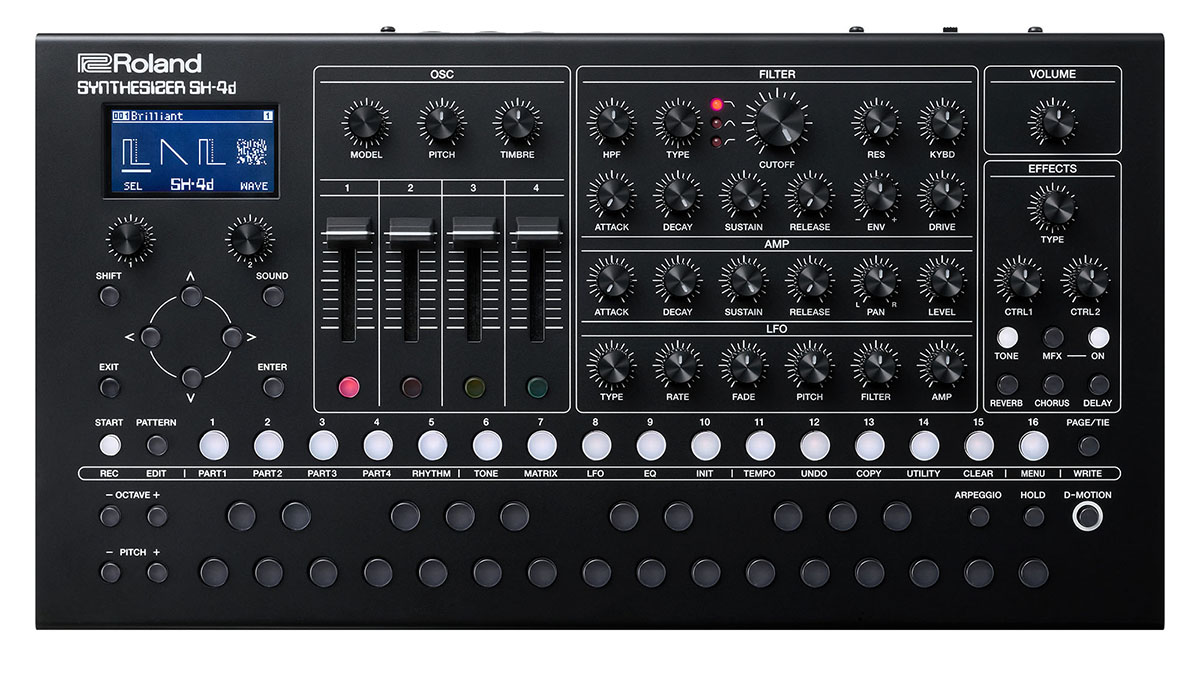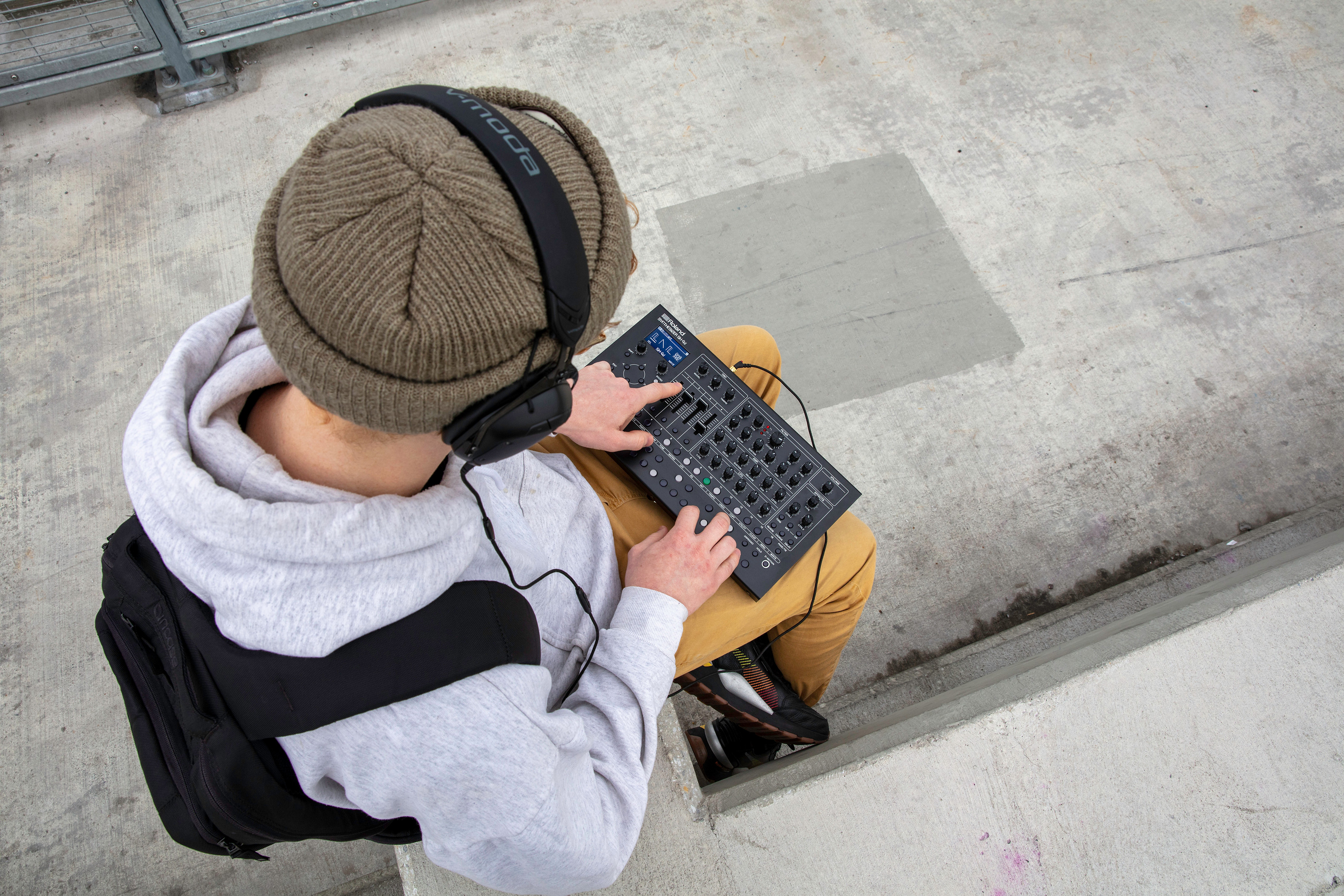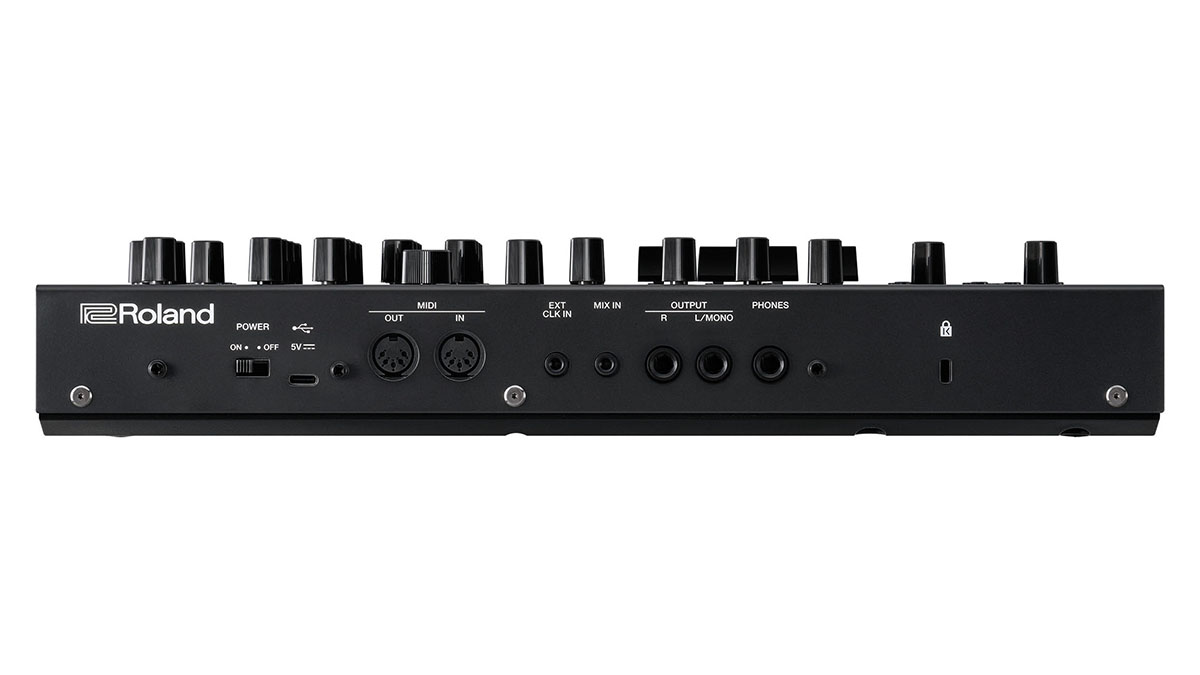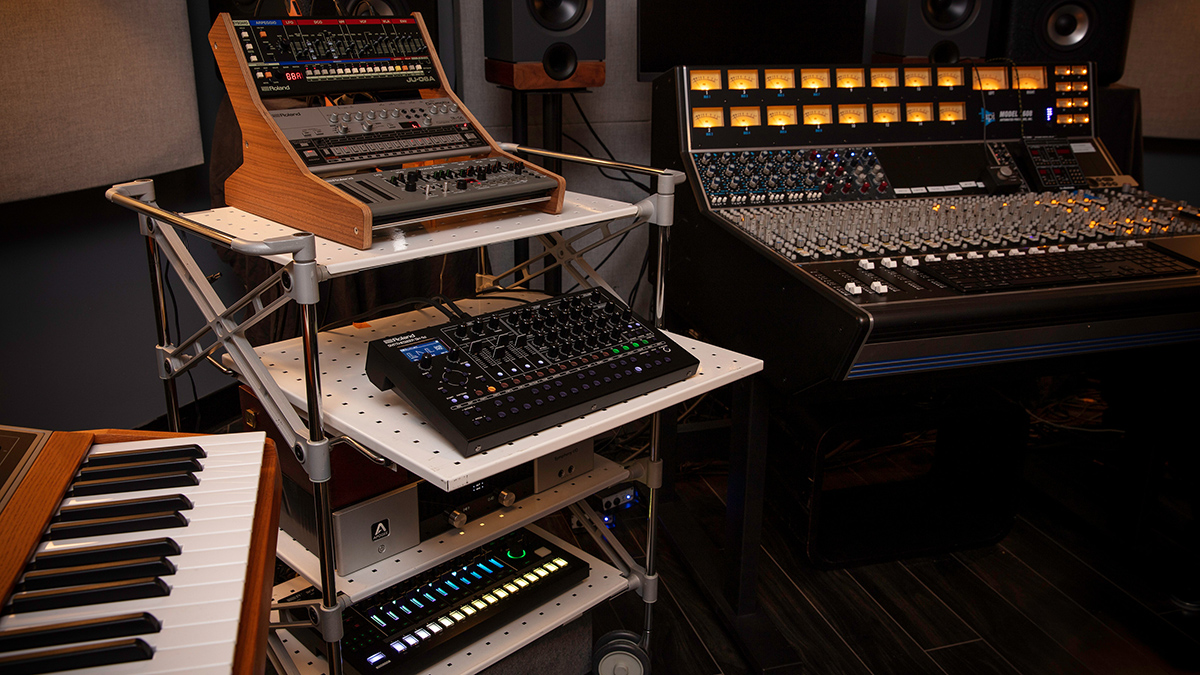5 reasons we’re excited about Roland’s SH-4d (plus 3 things we would've done differently)
Retro vibes and new school tricks explored
We have had the pleasure of being in the company of Roland's newest synth for just over a week now, which has been long enough to form a fair few opinions on the SH-4d.
Overall, we're quite enamoured by this desktop synth's feature set, but as with all things, there are a few features we're not so keen on. So, in the interests of fairness, we've gathered together some pros and cons.
We've already got a full review of the SH-4d, so if you want to go a bit more in-depth do check that out. In the meantime, here's the TL:DR version...
Roland SH-4d pros
1. It’s packed full of sounds
The SH-4d has four polyphonic synths onboard, plus a full rhythm section with 26 drum sounds per kit. Those synths can each make use of any one of 11 oscillator models, which include the signature SH-4d virtual analogue mode, plus models of vintage Roland gear and a range of digital and sample-based synthesis approaches. All feeding into a flexible signal path featuring a multi-mode filter, amp and LFO sections, and a variety of effects.
2. It does a good line in virtual analogue
Two of the SH-4d’s oscillator modes offer bang-on recreations of Roland classics – the SH-101 and Juno-106. Each mode faithfully recreates the oscillator section of its inspiration, which then feeds into the same signal path as each of the SH-4d’s other modes.
There are further analogue-style tools on offer too, including an ‘analogue feel’ setting hidden in the menus that introduce vintage-style drift. The effect section includes several emulations of vintage effects too, including Juno’s distinctive chorus, with control over its noisiness.
3. There’s some excellent digital tools too
The SH-4d has plenty of modern digital synthesis tools too. These include ring mode, wavetable and simple FM synthesis modes, plus PCM samples and a chord generator.
Want all the hottest music and gear news, reviews, deals, features and more, direct to your inbox? Sign up here.
Most interesting, however, is the Drawing mode, that allows the controls to be used to manually shape the oscillator waveshape. With some creative tweaking and modulation from the LFO and other sources, it’s possible to create some tones reminiscent of West Coast synthesis.

4. It’s actually a powerful drum synth
Although the SH-4d’s rhythm section uses samples as its source sounds, it’s a lot more powerful than it might look at first. Each sound can make use of two blendable sample layers, which can draw upon recordings of classic Roland hardware, along with synth oscillators, melodic tones and some more oddball sounds.
Each sound gets its own pitch envelope too, allowing for these source tones to for the basis of an analogue-style drum synth, shapeable via the SH-4d’s filter, amp envelope and effects.
5. It has some handy sequencing tools
Each of the SH-4d’s parts has its own polyphonic sequencer. Sequences can have their own individual length – up to 64 steps – rate and direction. Steps each have their own velocity, gate length and probability values, and can contain flams and sub steps. The SH-4d also offers full recording of parameter automation.

Roland SH-4d cons
1. Hardware I/O
Although the hardware looks and – mostly – feels great (we love the SH-02-inspired style), there’s a lack of hardware outputs. Users can stream each section in stereo to a DAW via USB, which is handy in the studio, for live use, some extra outputs would have been handy though.
2. It’s not very ‘playable’
The button keyboard is fine for basic sequencing, but not great for playability. You can hook up a MIDI controller, and the MIDI, velocity and aftertouch settings are flexible, but the SH-4d is crying out for a keyboard version. It’s also a shame there’s not a more up-front way to mute/solo parts.

3. It’s not expandable
There’s no uploading of user wavetables or samples, so the sounds in the box are all you’ve got to use. Unlike the recent Zen-Core instruments from Roland too, there’s no option to expand the range of modelled sounds. That said, there’s already a lot of depth here, and we don’t think this closed-off nature is too limiting.

I'm the Managing Editor of Music Technology at MusicRadar and former Editor-in-Chief of Future Music, Computer Music and Electronic Musician. I've been messing around with music tech in various forms for over two decades. I've also spent the last 10 years forgetting how to play guitar. Find me in the chillout room at raves complaining that it's past my bedtime.
- Simon ArblasterVideo Producer & Reviews Editor